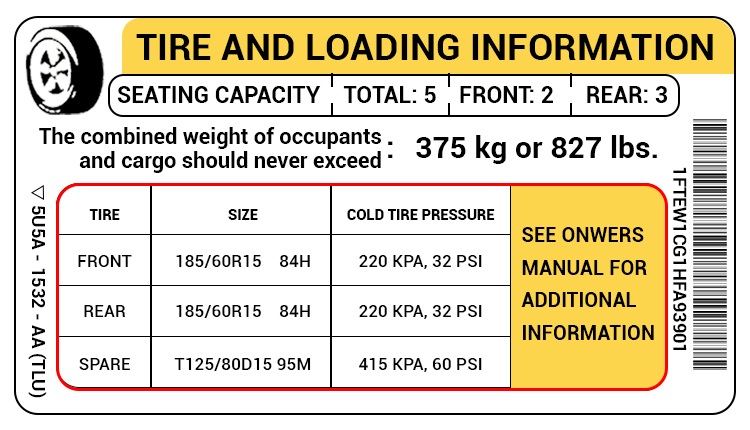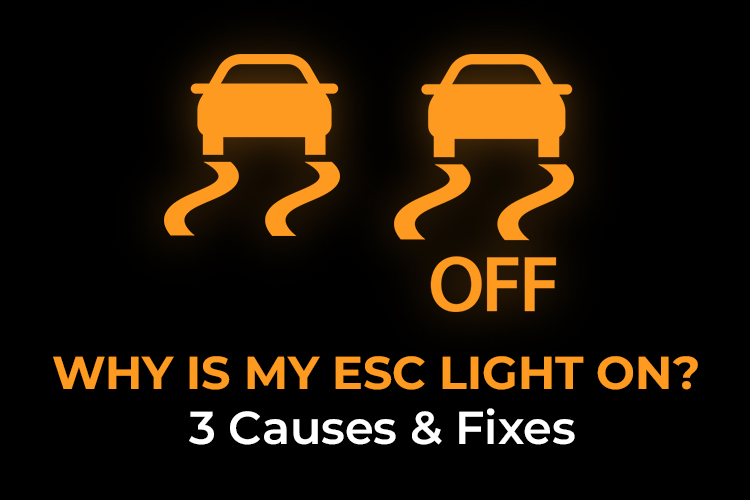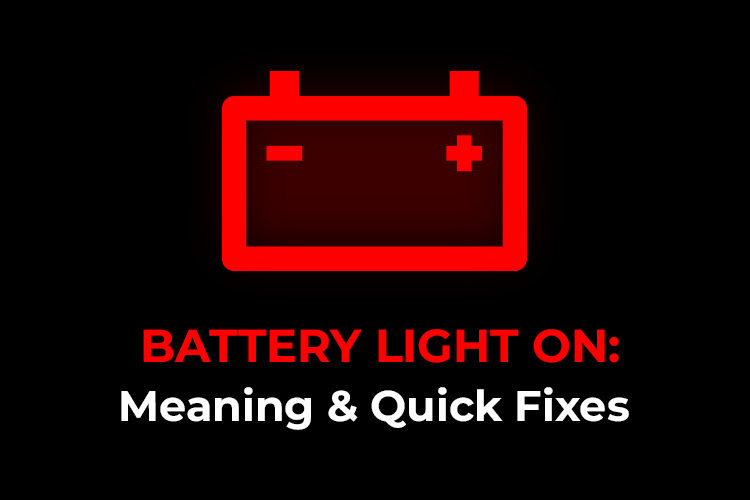Seeing the TPMS light illuminate on your dashboard? And you’re wondering:
- What does the light mean?
- Can I drive with it?
- What triggers it?
- What to do?
If these are your concerns, you’re in the right place. In this article, I’ll address all these questions about TPMS light, from what it means to how to fix it.
Let’s take a closer look at its meaning first!
What Does TPMS Light Mean?

The Tire Pressure Monitoring System (TPMS) is installed in vehicles to monitor the air pressure in the tires. The TPMS uses sensors mounted inside each tire, communicating with the car’s computer to provide information about the tire pressure.
So what does it mean when the TPMS light is on?
TPMS light will come on when your tire pressure is low or there is a malfunction in the TPMS. The meaning of the light will vary based on its behavior.
Scroll down to know exactly what your car is trying to tell you.
Illuminate and Stay On
When the TPMS light is on steady, it indicates that one or more of your tires is underinflated. The light will come on if your tire pressure drops by 25% or more than its recommended level.
But what is the correct tire pressure level on your vehicle?
Typically, the recommended tire pressure for most cars is between 32 to 35 psi when the tires are cold. It is important to check tire pressure when the tires are cold because your tire pressure is actually set wrong when the temperature drops or rises.
If you want to ensure the safe pressure range on your car, you can find it in the owner’s manual or sticker inside the driver’s door.

After identifying your normal range, you should check and adjust the pressure in each tire.
Sometimes, the TPMS light will go on and off when the tire pressure is extremely close to the minimum or maximum recommended level. The tire pressure fluctuation could be due to temperature changes.
If your light continues to turn on and off, it’s a good idea to check your tires to ensure they are properly inflated.
Flash then Stay On
If the light blinks for about a minute and then stays on, it indicates that one of the TPMS sensors has failed.
The light will come on at every ignition cycle if the problem is not corrected. Taking your car to a repair shop to diagnose and repair the issue is best. Most shops have a scan tool that can tell you exactly which sensor is broken. You also can do it on your own. Check my guide in part IV to get more information.
You need to note that some vehicles use two separate warning lights to indicate these two issues above.
The TPMS light indicates a problem with the monitoring system itself, while the tire pressure light alerts you to a low tire pressure issue.
You can find this on Honda, Acura, Toyota, Nissan, GMC, etc. And sometimes, you will see two warning lights illuminate at the same time.
Is It Safe to Drive with TPMS Light On?
No. It is not safe to drive with the TPMS light on. Driving with underinflated tires can cause several safety issues, including reduced handling, poor braking performance, and an increased risk of tire failure or blowout.
Even if the TPMS system is malfunctioning and the light is on without any problem with the tire pressure, it is still important to address the issue as soon as possible to ensure safe driving.
Why Is My TPMS Light On?
Low Tire Pressure
As mentioned above, if one or more tires are underinflated, the TPMS light will come on.
Solution: Check the pressure in all of your tires and inflate them to the recommended psi listed in your owner’s manual or on the sticker inside the driver’s side door.
Watch the video below to know the correct tire pressure for your car.
Faulty TPMS Sensor
The TPMS sensor is a small electronic device attached to each wheel and monitors the tire pressure. A malfunctioning TPMS sensor may send wrong signals to the car’s computer system, causing the light to come on.
Solution: Take your vehicle to a qualified mechanic or tire shop to have the failed TPMS sensor replaced.
Tire Damage or Puncture
If a tire is damaged or punctured, the air can leak out slowly, causing the tire pressure to drop below the threshold set. When this happens, the TPMS light will illuminate to warn you that the tire pressure is low.
Solution: Depending on the severity of the damage, you might have to repair or replace the tire.
Dead Battery
Batteries power the TPMS sensors. So if the battery in one of the TPMS sensors fails, it will no longer be able to communicate with the vehicle’s computer. Then the computer will detect a problem with the sensor and trigger the TPMS warning light to illuminate.
Solution: Replace the sensor. Because the battery inside the sensor is not replaceable, and the entire sensor will need to be replaced as a unit.
What To Do When the TPMS Light Comes On

Check the Tire Pressure Level
Before checking the pressure, you have to determine the recommended level of your car.
You can check it manually with a tire pressure gauge. The gauge will show you a number on its display.
Compare the reading on the gauge to the recommended pressure. If you find your pressure is low, you need to add more air. If it is high, release air until you get the correct pressure.
It may take up to two minutes of driving over 20 mph for the light to turn off after you have filled your tires to the recommended inflation pressure. That gives it time to calibrate and check for false pressure readings.
Keep in mind that some cars have a TPMS sensor in a spare tire. So always remember to check that. Your spare will almost always have a different pressure than your regular tires. It may be around 60 psi.
One of my clients ended up at the dealer spending upwards of $200 just to get the TPMS light reset when all he needed to do was adjust the pressure in his spare.
Check the TPMS Sensors
To find the bad sensor ideally, you should use the TPMS scan tool. This device can quickly test whether or not your TPMS sensor is working.
It will show the TPMS sensor’s unique ID number, tire pressure, temperature and battery status. The sensor must be replaced if the test fails or the battery is low.
Before replacing it on your tire, you must program the sensor into your TPMS system. This is because TPMS sensors are typically shipped in a “sleep” mode to preserve their battery life, and they need to be activated to transmit their unique ID codes to the TPMS system.
To activate a new sensor, you will need a TPMS tool that can activate the sensor and read its ID.
Once you have activated the TPMS sensor, you can install it on your tire and follow the relearning process for your specific vehicle to ensure that the TPMS system recognizes the new sensor and its location.
It’s important to note that it can be a challenging process that requires specific equipment and expertise. If you’re not confident in your ability to do the job safely and correctly, it may be best to have a professional technician perform the work.
In case you want to do it yourself, you have to get a TPMS tool that is compatible with your vehicle and meets your needs. Check out my in-depth review of the Best TPMS Tools to find out the best suit for you.
What’s Next?
It is crucial to pay attention to the TPMS light and take immediate action when it illuminates, such as checking the tire pressure or taking the car to a professional mechanic.
Keeping your tires inflated to the recommended pressure not only reduces the risk of tire-related accidents but can also save you thousands of dollars over time.
Moreover, if you need to buy a TPMS tool to check the status of your sensor, Autel TS408 is a good choice. Read my review to know why I recommend it.
Now I’d like to hear your thoughts:
Are you aware of the specific reason why your TPMS light is illuminated?
Let me know by leaving a comment below.


Recommended for you
Triangle with Exclamation Point: What Does It Mean?
Behind the Traction Control Light: Meaning, Causes, & Fixes
Service StabiliTrak: What You Need to Know